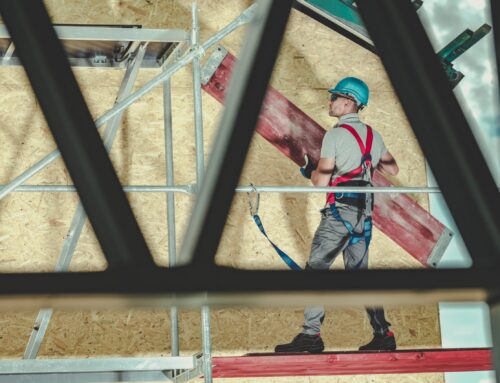Eye-related injuries are some of the most common hazards in the workplace, and some professions are at a higher risk for these accidents than most. As a matter of fact, over 20,000 eye injuries happen in professional settings every year, affecting employee morale and resulting in a productivity decline. But eye experts emphasize that 90% of these cases could have been prevented with proper eye protection.
In line with this, it’s best to be prepared with the correct protective eye gear, depending on your workplace, to lessen the chances of any injuries or disease. Below are some of the most recommended safety measures, across different workplaces and industries, to prevent eye injuries and related diseases.
Outdoor field work
Workers that are stationed outdoors are exposed to a variety of elements, most notably the sun. Frequent exposure to the sun’s harmful ultraviolet rays can lead to the development of several eye conditions, such as photokeratitis and cataracts. In severe cases, these can cause long-term vision loss.
Furthermore, working under the sun often causes squinting, which can result in regular headaches. When this happens, employee productivity may decrease.
Outdoor workers would thus benefit from getting gear that can shield their eyes from the sun. Employers should thus consider providing or recommending that workers use sun visors. That will give the eye area protection from the heat and shield the face from sun damage. Using polarized sunglasses can further protect one’s vision by blocking 100% of UV rays. The polarized coating also reduces the appearance of light glares, eliminating a big source of squinting and providing better visual clarity. Have workers wear visors and sunglasses between 10 am and 4 pm, when the sun is at its most intense.
Desk jobs
Many would be surprised that the eyes of desk-bound employees are at risk, but studies show that the average worker spends excessive hours in front of screens. For instance, the screen time of remote workers reaches up to 13 hours per day. This is discouraged as too much time spent on digital screens can result in eye strain and dry eyes. The latter can result in a condition called keratoconjunctivitis sicca, which is a lack of tears that causes a burning sensation. Many eye experts attribute this to the blue light emitted by digital devices.
Desk job workers can combat these effects by using blue light glasses. These spectacles filter out blue light, reducing the amount that reaches the eyes and alleviating any strain. For dry eyes, workers can prevent this by keeping some eye drops on hand. Many eye drops act as artificial tears, moisturizing the eyes and providing much-needed relief. You can use these up to 4 times a day for maximum hydration.
Manual labor
Construction work is often regarded as one of the most dangerous professions worldwide. The environment entails being exposed to a handful of risks, resulting in several fatal occupational accidents every year. For example, Welder’s Flash is an intense version of eye sunburn resulting from handling a welding torch. Blunt force trauma is also one of the most common ways construction workers get hurt.
In order to lower the chances of welder’s flash, construction workers can wear equipment such as welding helmets. These are heavy-duty gear meant to protect the eyes from flash burns and sparks from welding. Wearing hard hats will also protect them from any impact caused by falling objects. These hats come with an extended brim to protect the eyes from any injuries from debris, such as when using devices like air guns. Experts recommend taking it further by replacing these helmets often, as even some damage can render them weaker and thus ineffective.
Medical fields
Medical professionals designated in laboratory settings often find themselves handling sensitive material, ranging from infectious samples to highly dangerous chemicals. They are also at risk of contracting viral diseases through the eyes, such as bacterial keratitis. Thus, they should wear protective equipment to reduce the likelihood of chemical splashes or infections through the eyes.
Medical workers are thus required to wear laboratory safety goggles to prevent chemical hazards from reaching the eyes, as these may result in severe ocular damage. These goggles extend to the sides, protecting the eye area from all angles. Other medical workers that interface with patients must also wear PPE face shields. These act as a barrier against infectious bacteria that can lead to life-threatening diseases like endophthalmitis. For increased protection, workers should also abide by specific disinfection protocols, such as using a medicated washing solution.
Risks are unavoidable in certain jobs, but employees can do their best to lessen the likelihood of them happening. By following the preventative measures stated above, workers across various industries can ensure the safety of their eyes at work.
Written by Therese Manzie for safetynow.com






